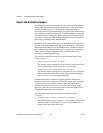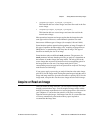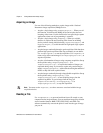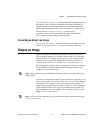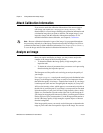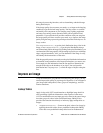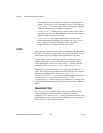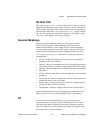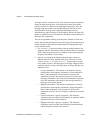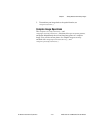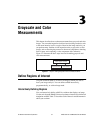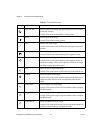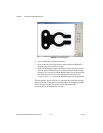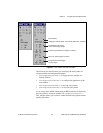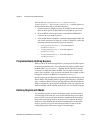Chapter 2 Getting Measurement-Ready Images
IMAQ Vision for LabWindows/CVI User Manual 2-12 ni.com
An image can have extraneous noise, such as periodic stripes, introduced
during the digitization process. In the frequency domain, the periodic
pattern is reduced to a limited set of high spatial frequencies. Also, the
imaging setup may produce non-uniform lighting of the field of view,
which produces an image with a light drift superimposed on the
information you want to analyze. In the frequency domain, the light drift
appears as a limited set of low frequencies around the average intensity of
the image (DC component).
Youcanusealgorithmsworkinginthefrequencydomaintoisolateand
remove these unwanted frequencies from your image. Follow these steps to
obtain an image in which the unwanted pattern has disappeared but the
overall features remain:
1. Use
imaqFFT()
to convert an image from the spatial domain to the
frequency domain. This function computes the Fast Fourier Transform
(FFT) of the image and results in a complex image representing the
frequency information of your image.
2. Improve your image in the frequency domain with a lowpass or
highpass frequency filter. Specify which type of filter to use with
imaqAttenuate()
or
imaqTruncate()
. Lowpass filters smooth
noise, details, textures, and sharp edges in an image. Highpass filters
emphasize details, textures, and sharp edges in images, but they also
emphasize noise.
• Lowpass attenuation—The amount of attenuation is directly
proportional to the frequency information. At low frequencies,
there is little attenuation. As the frequencies increase, the
attenuation increases. This operation preserves all of the zero
frequency information. Zero frequency information corresponds
to the DC component of the image or the average intensity of
the image in the spatial domain.
• Highpass attenuation—The amount of attenuation is inversely
proportional to the frequency information. At high frequencies,
there is little attenuation. As the frequencies decrease, the
attenuation increases. The zero frequency component is removed
entirely.
• Lowpass truncation—Specify a frequency. The frequency
components above the ideal cutoff frequency are removed, andthe
frequencies below it remain unaltered.
• Highpass truncation—Specify a frequency. The frequency
components above the ideal cutoff frequency remain unaltered,
and the frequencies below it are removed.



